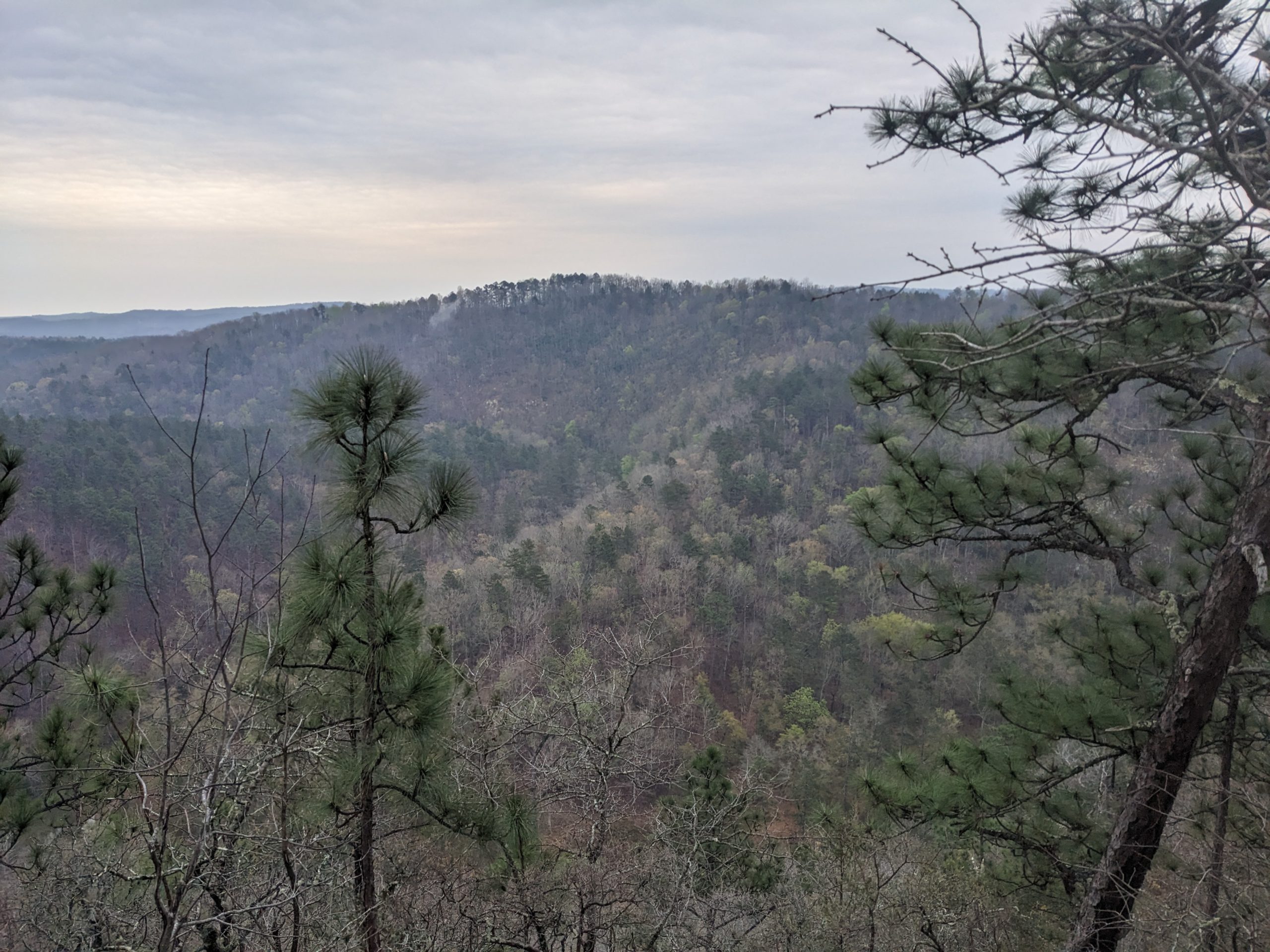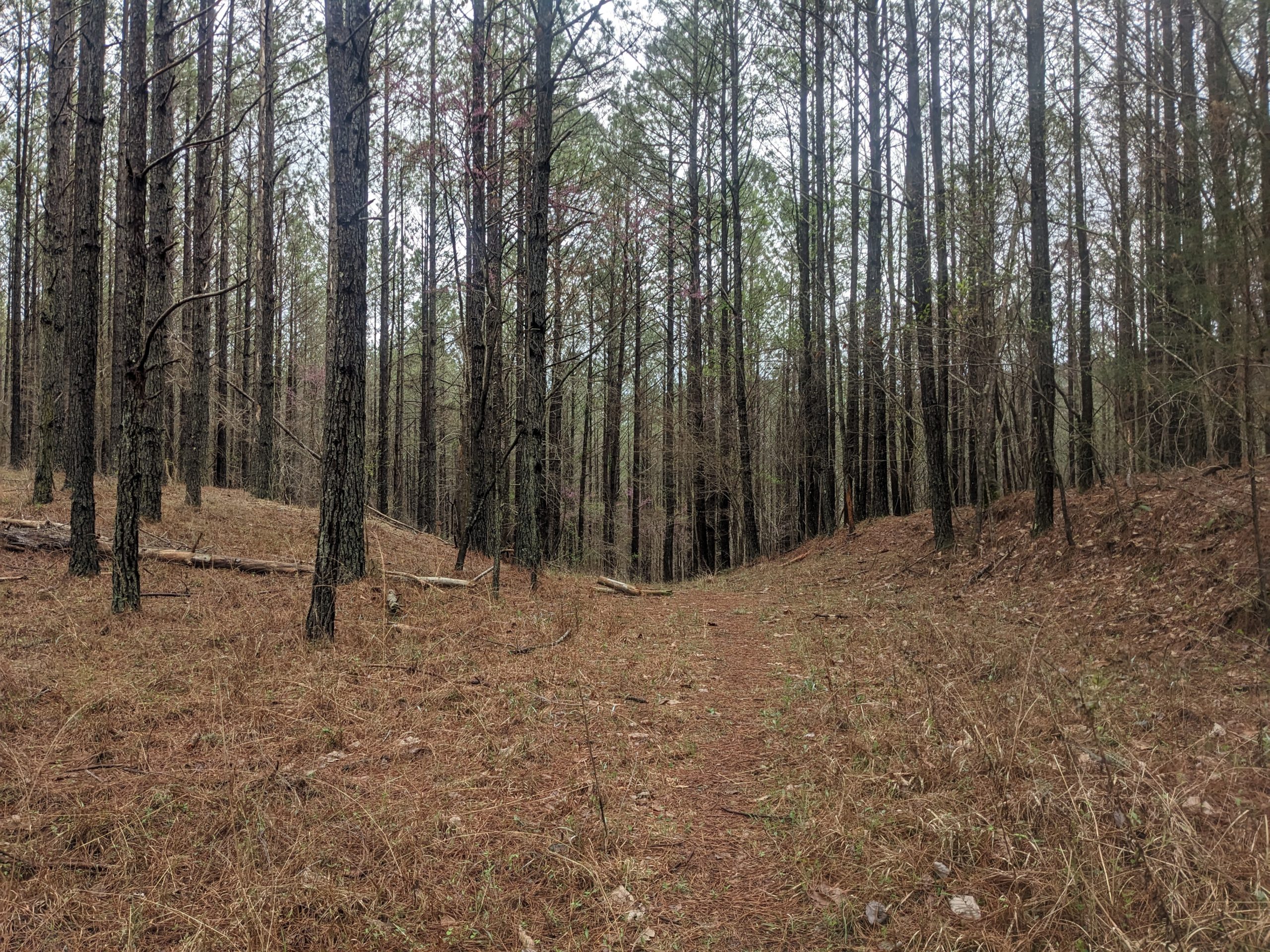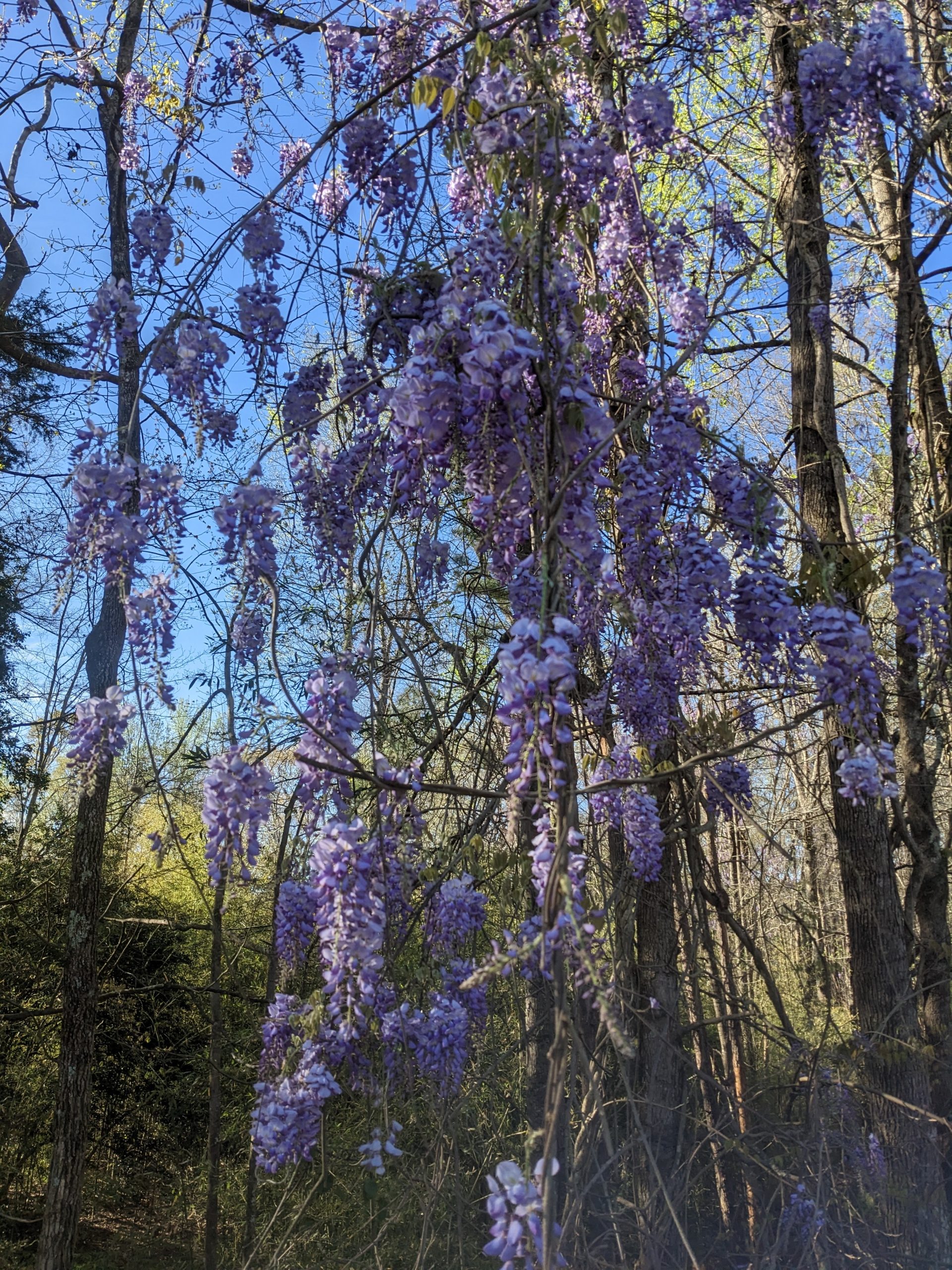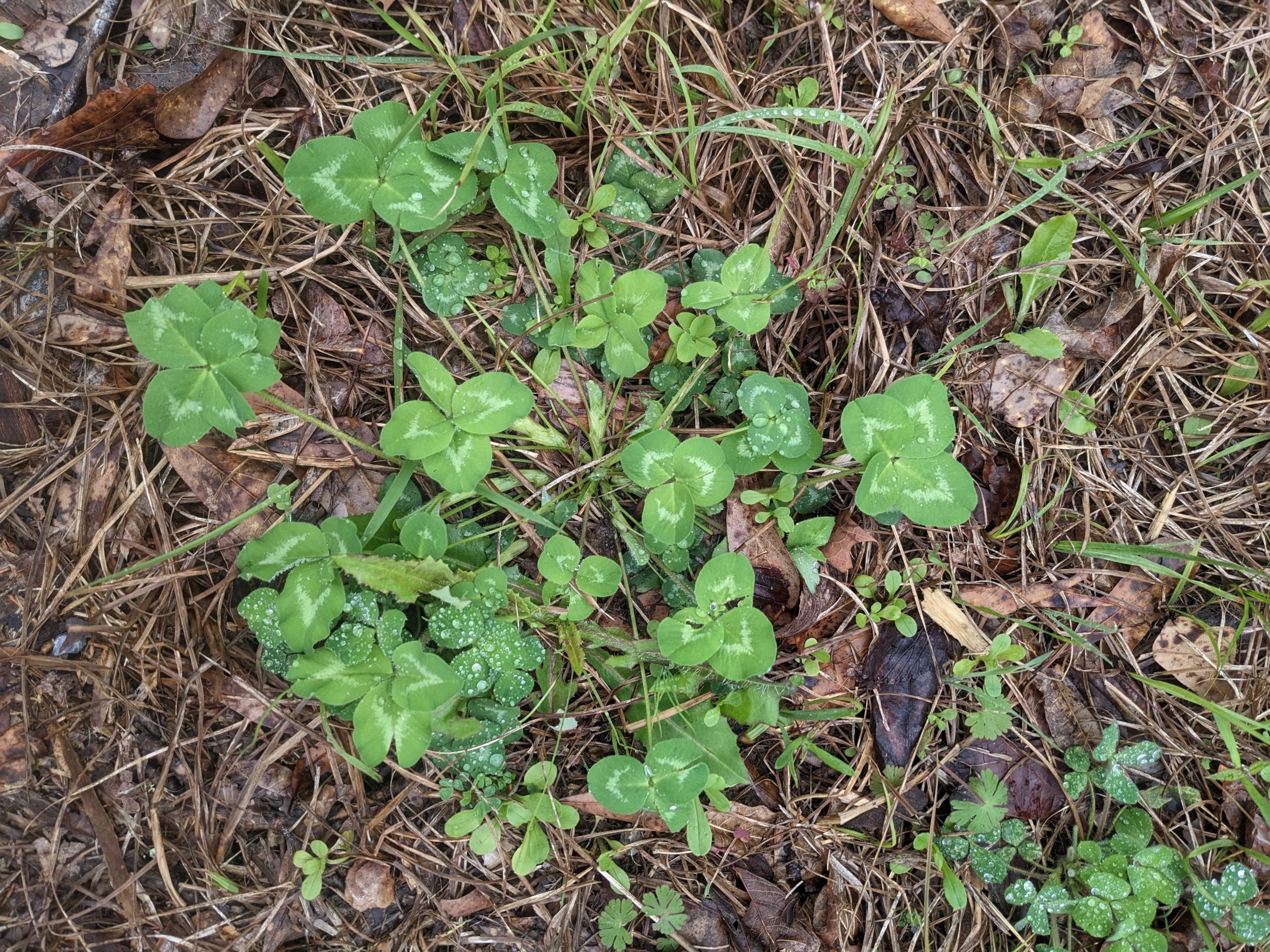The (Unfortunately Literal) Road to Georgia
Day 2
Repeating the Steps of Yesterday
From the shelter the trail winds around a picturesque valley in lightly wooded forest before turning into a road walk for 4.5 miles. The Dai-Ichi life trail the Pinhoti follows along with is a beautiful trail that has a carpet of dead pine needles from last year, expansive views into valleys, and generally has a palpable feeling of life and possibility to it. It also had more rain and fog come in shortly after I started for the day. The rain abated soon and my rain jacket was able to keep me mostly dry, while the fog remained and replaced the views of rivers cutting valleys into the hills with an opaque white mist. Thankfully I got a fair weather view of it yesterday while hiking to Flagg.
New Ground
The roadwalk I soon emerged on is about what you would expect out of a roadwalk. Somewhat repetitive, unpleasantly hard surface, and directly exposed to the sun with minimal shade. Also quite a few dogs barking and nipping at the air chasing me away from their owners’ houses. Thankfully they’re all bark and no bite. The upside to roadwalks is the miles are easy and go by quick. But not before my directionally challenged side came out to play and I took a turn down the wrong road for a half mile before realizing and doubling back.
After finishing the roadwalk, the Pinhoti Trail treats you to another 6.6 miles of well maintained wooded trail, mostly passing through pine forests.
Flower Recap
I added pennywort, decumbent trilliums, star chickweed, southern dewberry, wisteria, heartleaf foamflower, cutleaf toothwort, and white violets to my flower observations through these woods.
Early Thoughts on the Pinhoti
The water crossings on the Pinhoti are much wilder feeling than they are in the northeast, and conveniently placed rocks to hop across don’t seem to be as consistent of a thing trail maintainers do here. A few of them had sketchy log bridges, but there were also some I saw no other option than to get wet and plow through. I have mixed feelings about this and can see how it adds to the experience to have more natural streams instead of manmade bridges or rocks to cross with, but I’m also a pansy about being wet. Maybe part of my growth on this hike will be to reduce my aversion to wet feet.
The Pinhoti trail itself is quite well maintained and easy hiking, relative to the Adirondacks and White Mountains where I spend the most time wandering. Blazes can occasionally be a tad confusing as the blue blazes used to mark the trail also seem to be used for other purposes. But nothing paying attention can’t solve. The blazes aren’t needed in most parts regardless because the trail tread itself is well worn. My early impressions have been fairly positive, roadwalks aside.
First Thru-hiker Meeting
A few miles before I stopped for day 2 I met Sunshine, a hiker who started with the Florida Trail and has a goal of reaching the end of land in northern Canada. I walked and talked with them for a few miles. We talked mostly about what the Florida Trail is like as it’s something I’ve been half tempted to do but don’t know much about. I was told it’s a mixed bag and while the plants there are lush and lovely, it can get monotonous in its flatness and trudges through swamp often. Sunshine is in much better shape than me and pulled ahead soon to maintain their schedule to reach Newfoundland before the snow.
I stopped for the night just before the next roadwalk section adjacent to a lovely stream. Seeing that the forecast was for a clear night, I decided against setting up my hammock’s rain fly so I could have a sight of the night starts. While it didn’t rain, I still woke up to a bit of a wet sleeping bag in the morning. My guess as to why is dew. Thankfully the forecast is for a sunny day 3 so I should have ample opportunity to dry things out.
Day 3
The Road to the Woods
The main downside to the Pinhoti compared to the AT is it’s much less finished. The Pinhoti has about 60 miles of roadwalk in its ~350 total miles. The bulk of these are in Georgia, where there are 135 trail miles and 43 roadwalk miles, while Alabama has 161 miles of trail and 16 miles of roadwalk. However, the Alabama section pulls no punches and all of its roadwalks are within the first 29 miles, with 11 miles straight from mile 17.3 to mile 28.8.
Even in cooler spring temperatures, this is a hot and shadeless stretch where you feel like you can’t stop anywhere for rest without intruding upon someone’s front yard. As is tradition for me on roadwalks, I turned the wrong way immediately and didn’t notice for half a mile, adding an extra mile to the already hot and shadeless stretch. Along the way I was treated to many wildflowers in bloom along the side of the road.
Resupply 1: the First of Many
The upside to the roadwalk is the first resupply option is quite early in at mile 21. It’s directly on trail, too. Stepping inside is a welcome excuse for some shade and lollygagging, and I took my time picking up food to make it to the next resupply at mile 85. It’s nice to be able to ease into hiking before longer stretches between resupplies. Being able to start Flagg packing light on food helps a lot easing into things. A few people at the Dollar General noticed I was a hiker and asked me a bit about it, with an especially endearing older man asking if I was one of those backpackers and talking a bit about the adventures of his youth before cursing his bad knee.
The curious people asking me what I was doing brings me back to when I met a thru hiker on one of my first hikes going to Jefferson, Adams, and Madison in the White Mountains. That was the first I learned of the possibility of long distance hiking. It came at a time I had yet to do any overnight trips (save for sleeping in my car to do two day hikes a weekend) and every hike felt like a death march as I struggled to gain fitness, let alone multiple days of staying in backcountry. I didn’t give it much thought then, but that meeting planted the seed in my mind and I would speak to many more thru hikers and trail runners as I got more familiar with the Whites and started to reveal what my body was capable of.
Thru hikers, trail runners, rock climbers, and bushwhackers have been one of the most welcoming communities I’ve ever known. I only hope I can be as good of a representative of it now as others were to me in the past.
Back on the Road
The remaining 8 miles of the roadwalk were rather uneventful, as roadwalks tend to be. It’s not necessarily unpleasant, but given the choice between road or woods I’ll pick woods in a heartbeat. It will certainly make extended woods that much more satisfying when I reach them.
By the time I made it to the Trammel Trailhead and back to a proper trail, my feet had had enough and I had to get ready to stop for the day. I’ve been trying to take my shoes off during breaks and massaged them in a cold stream for 10 minutes earlier in the day, but hotspots are forming regardless and I seem to be capped at 12 or so miles per day until I build some more fitness.
Flower Recap
Day 3’s new wildflowers included a horrid thistle, dandelions, buttercups, paintbrushes, wild strawberries, red clovers, and white clovers. All the usual suspects for roadside wildflowers. I also spotted some plantain leaf pussytoes on my short stretch in the woods.
Another Night Winds Down
I stopped for the night near some reeds and a seasonal stream. As I drifted asleep I smelled smoke, which could be someone else’s campfire or it could be a controlled burn to kill invasive plants and provide a necessity for the lifecycle of native species. In the past the majority of Alabama was covered in grasslands and open pine that the natives would use controlled burns to maintain. These practices are now being done again after a jaunt where the Forest Service tried a strictly hands-off management approach, and the old growth open pines are slowly being regenerated in wilderness areas.
I fell asleep to the feeling of a gentle breeze rocking my hammock and blowing over my face, with the gentle rustling of reeds in the background.
This website contains affiliate links, which means The Trek may receive a percentage of any product or service you purchase using the links in the articles or advertisements. The buyer pays the same price as they would otherwise, and your purchase helps to support The Trek's ongoing goal to serve you quality backpacking advice and information. Thanks for your support!
To learn more, please visit the About This Site page.







